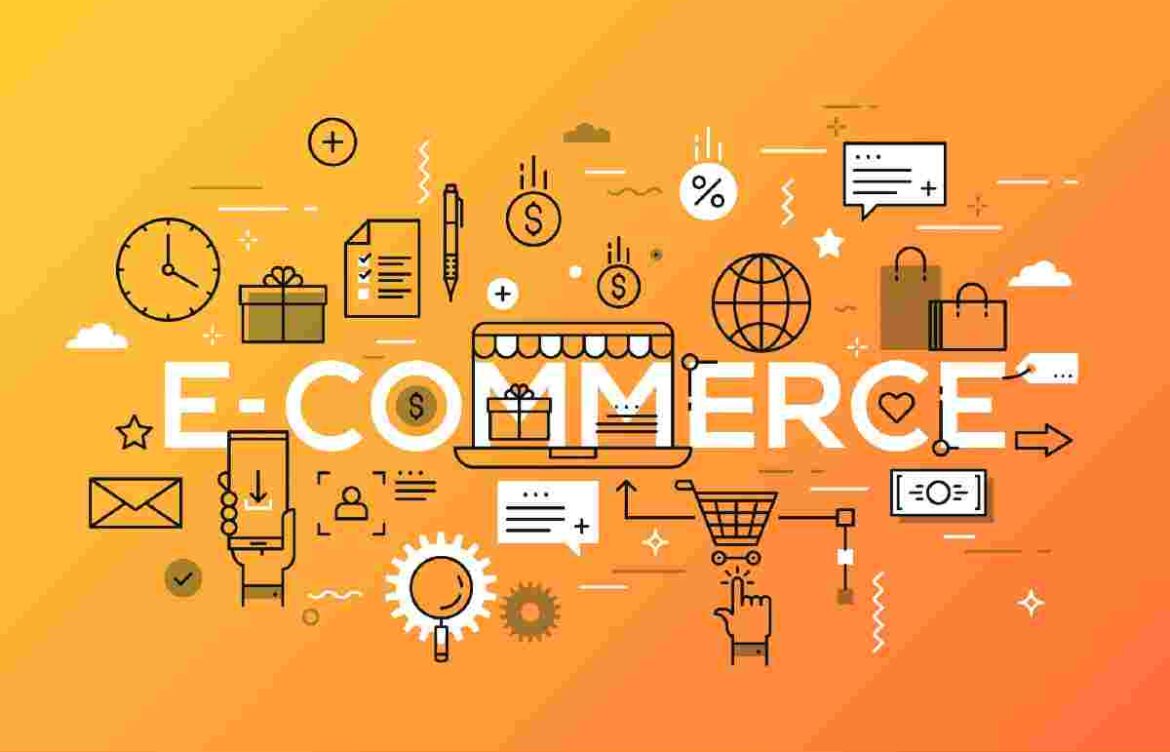
What is E-commerce?
E-commerce, or electronic commerce, buys and sells goods and services online. It includes exchanging goods or services between businesses, consumers, or both.
E-commerce business remains facilitated through websites, mobile apps, or online marketplaces.
Where ecommerce once described a simple process—a consumer purchase from an ecommerce site, for instance—the term has expanded as technologies have advanced. Today, ecommerce can refer to business-to-business commerce or internal business transactions. It can also apply to, for example:
- The online stores of multichannel retailers with brick-and-mortar locations
- Sharing economy platforms facilitating the purchase of services like rideshares
- Social media sites like Facebook, where consumers engage with so-called social commerce
As the e-commerce industry has developed, it has also grown to encompass related technologies that facilitate the sales process, such as mobile payment platforms and secure data transfer technologies.
How does e-commerce work?
The Internet powers e-commerce. Guests use their own bias to pierce online stores. They can browse those stores’ products and services and place orders.
As an order remains placed, the client’s web cybersurfer communicates back and forth with the garçon hosting the e-commerce website. Data about the order remains a matter of a central computer known as the order director. The data is also encouraged to databases that manage force situations, a trafficker system that manages payment information using payment processing operations similar to PayPal, and a bank computer. Eventually, it circles back to the order director. It ensures that the store force and client finances are sufficient to recycle the order.
After the order is validated, the order director notifies the store’s web garçon. It displays a communication notifying the client that their order has been reused. The order director also sends order data to the storehouse or fulfillment department, letting it know the creation or service can be dispatched to the client. At this point, palpable and digital products are transferred to the client, or access to a service is granted.
Advantages and Disadvantages of E-commerce
Advantages
E-commerce offers buyers and sellers several advantages:
- Convenience: E-commerce can happen 24 hours a day, seven days a week. Consumers can buy at their convenience, and business owners can sell while sleeping.
- Increased selection: Many stores offer a more expansive collection of products online than they could ever carry in their brick-and-mortar counterparts. Moreover, many stores that solely exist online offer consumers exclusive inventory that is unavailable elsewhere.
- Potentially lower start-up costs: E-commerce companies may require a warehouse or manufacturing site but usually do not need a physical storefront. The cost to operate numerically is often less expensive than requiring to pay rent, insurance, building maintenance, and property taxes.
- International sales: As long as an e-commerce store can find a way to ship its products to its customers, it can sell to anyone worldwide and stay not limited by physical geography.
- Opportunity to collect valuable data: Willingly or unknowingly, consumers share much information on their interests and shopping habits when they buy or browse online. Site owners can monetize this data in several ways, using it themselves and selling it to others.
Disadvantages
Some drawbacks come with e-commerce. Those can include:
- Limited customer service: If we shop online for a CPU, We cannot simply ask a worker to demonstrate a particular model’s features in person. Moreover, although some websites let you chat online with a staff member, that is not typical. A disadvantage for shoppers, this can also be a money-saver for retailers.
- Lack of instant gratification: When you buy a product online, you must delay shipping it to your home or office. However, e-tailers like Amazon now make the waiting game slightly less sore by offering same-day delivery as a premium choice for select products.
- Inability to touch products: Online pic Do not necessarily convey the entire story about an item, and e-commerce purchases can be disappointing when the items do not meet the buyer’s expectations. Case in point: clothing may remain made from shoddier fabric than its online image indicates.
- Dependence on technology: If a website crashes or must be temporarily taken down for any reason, the business remain effectively closed until things return to normal.
- Greater competition: Although the low cost of starting an e-commerce business can be an advantage, it also means that competitors can enter the market as quickly as possible.
Conclusion
Given the increased e-commerce use in recent times, judges, economists and consumers have debated whether the online B2C request will make physical, slip up- and mortar stores obsolete. There is little question that online shopping is rising significantly. Gartner’s 2023″ Magic Quadrant for Digital Commerce” projected that by 2025, 80 B2B deals between dealers and buyers will take place in numerical spaces or channels.
